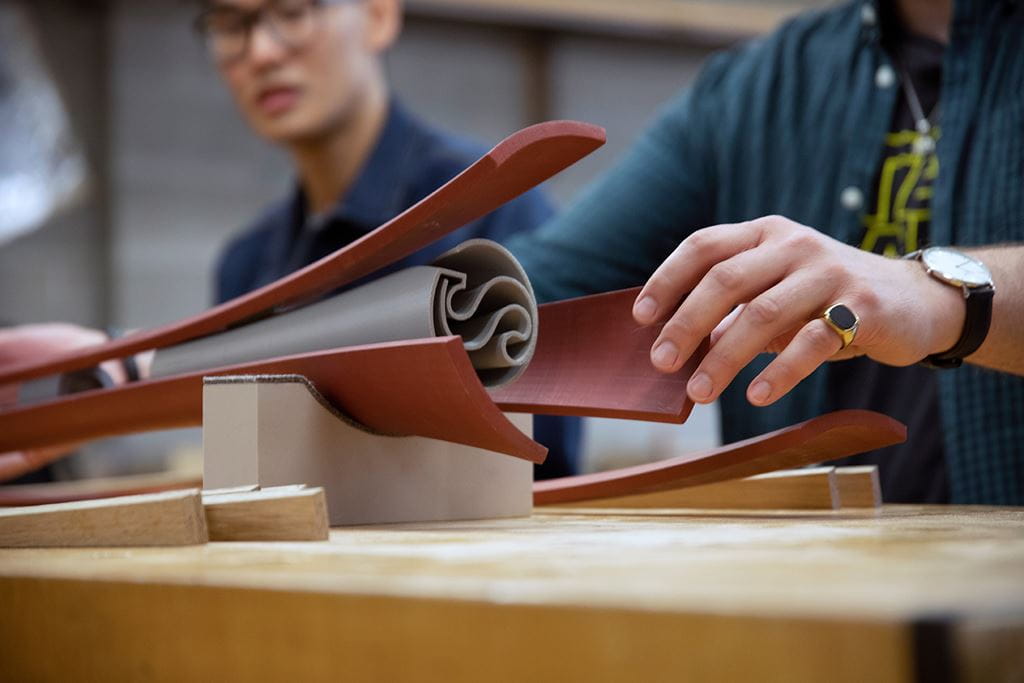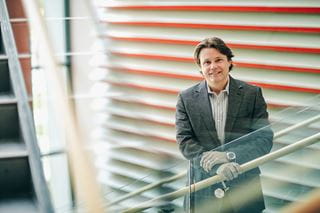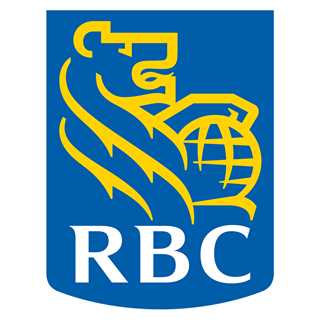
The amazing mace: Sheridan’s newest icon for creativity
 by Jon Kuiperij – Aug 22, 2019
by Jon Kuiperij – Aug 22, 2019 Creativity. The Bruin. A bold capital ‘S’. Double Blue.
When you think of Sheridan, it’s likely that one or more of those come to mind. But when Dr. Janet Morrison became the College’s Provost and Vice President in 2016, she felt Sheridan still needed something that was truly emblematic of the institution — particularly for major ceremonial events, like Convocation.
“For hundreds of years, postsecondary institutions around the world have used maces to symbolize their dignity, sovereignty, tradition and authenticity,” says Dr. Morrison, who became Sheridan’s President and Vice Chancellor in 2019. “When I arrived here and realized Sheridan didn’t have a mace, it seemed like a missed opportunity to express our unique identity, character, style and strength.”
In short order, the idea was born to launch a student design competition to fill that void, ensuring that the very people who the Sheridan Mace would represent would be the ones whose creativity, skill and talent would be harnessed to create it.
Design competition focused on student involvement
“Catalyzing creativity is something that’s vital in postsecondary education, and it’s one of our unique qualities,” says Dr. Catherine Hale, Director, Creative Campus. “It was exciting to have the opportunity to bring together our faculty, students and staff members to support a project that not only symbolizes Sheridan’s identity but was also created through a process that reflects our deep commitment to creative learning, creativity, innovation and entrepreneurship.”
With that in mind, the decision was made in the fall of 2018 to hold a competition in which teams from across all Sheridan campuses, faculties and departments could propose design ideas for the Mace. Representatives from various departments, including the Centre for Applied Manufacturing and Design Technologies (CAMDT), were brought together to create a design brief that identified the project and its objectives, gave examples of other maces and spelled out requirements.
The first rule was that, while combined student/employee teams were eligible to participate, students had to account for at least 50% of any team. Notes Dr. Hale: “Meaningful student learning opportunities are always first and foremost here at Sheridan, particularly for any work we do around the Creative Campus.”
Program coordinator worked Mace design into curriculum
Students weren’t the only ones who saw potential benefit from the opportunity to design the Sheridan Mace.
Professor and program coordinator Scot Laughton also embraced the chance to shed some light on his Industrial Design program, a five-year-old Craft and Design degree specialty that doesn’t yet have the same history or reputation as Sheridan’s esteemed Furniture, Textiles, Ceramics and Glass streams.
Rather than simply ask his students to develop proposals outside of class, Laughton worked the competition into his curriculum. The Mace design was the first project of the year for second-year Industrial Design students, challenging them to blend multiple materials in a way that made sense both aesthetically and functionally. “Materials are chosen for their structural qualities as well as for the way they communicate and reinforce metaphorical meanings,” Laughton says. “Those meanings are expressed through form, traditional and modern materials, and the beauty found in the juxtaposition of those materials and processes.”
That may explain why Industrial Design student teams accounted for eight of the 12 submissions into the design contest. In their proposals, teams were asked to provide a mock-up of their design; a brief explanation of the symbolism and connection to Sheridan; a description of the materials and production schedule; and an estimated budget and timeline.
Design is subtle, yet distinctive
One of those eight Industrial Design teams was the duo of Erik Irwin and Alan Ngo, whose proposal was the consensus choice of the selection committee.
The exterior of Irwin and Ngo’s four-foot design featured three bent oak wood flutes — representing each of the three campuses — flaring out at the top to symbolize Sheridan’s blossoming future. Enveloped by the flutes were pieces of stainless steel: rings that represented each of the College’s faculties as well as a top segment that represented Sheridan as a whole. Blazed into the top was the distinctive Sheridan ‘S’, and each ring was to be subtly engraved with a faculty’s master pattern.
“The Sheridan ‘S’ is an important symbol of the school, but we also didn’t want its inclusion to look like a logo. We wanted to make it more subtle and hidden. It’s there, but you have to look for it a little bit,” Irwin explains. “It’s the same for the Mace itself. It’s a strong silhouette, distinct and recognizable from far away. But when you get close, you can see there’s more to it.”
Adds Ngo: “We did a lot of brainstorming. When we were designing this, we were thinking about the history that this would pass on, rather than it simply being our first project of the year.”
A collaborative production process
Less than one month after the deadline for design proposals, a temporary iteration of the Sheridan Mace appeared at Dr. Morrison’s installation as Sheridan President, then again at Fall Convocation. In order to accommodate that quick turnaround, the first Sheridan Mace was fabricated out of 3D-printed plastic. Students and faculty from the Industrial Design studio produced the flutes and rings while the Sheridan ‘S’ was built in Davis Campus’ CAMDT fabrication lab.
Fabrication of the permanent Mace began the following May, when students and faculty had a three-week window in which to complete the icon for use at Spring Convocation. And while the initial design called for curved flutes that were seamless, the group quickly discovered that the production process would be anything but.
“The reality of making this came into effect after our proposal won,” Irwin admits. “We had some ideas, but we learned what was unrealistic.” One such idea was using flexible veneer sheets to create the exterior surface of the flutes. “That bombed,” laughs Laughton.
Fortunately, Furniture studio head Peter Fleming and one of his students, Ernest Wong, had a better idea: coopering, a traditional technique primarily used in barrelmaking.
Wong was brought on board to assist with the new assembly process of the flutes, which involved forming sections of four thin strips of white oak laminated on top of each other, beveling the edges and then clamping and gluing each section together.
“Manufacturing was not in our wheelhouse the same way as it is for furniture people who live and breathe it,” Irwin says. “It was cool to see Ernest’s ideas and how he went about creating the flutes.”
Another part of the production process that deviated from the original plan was the creation of the Sheridan ‘S’ and the rings. Time, money and visual quality were all factors in the decision to abandon the idea of forming them from stainless steel. The team once again turned to 3D-printing technology, this time to fabricate the permanent Mace’s internal components.
“My group didn’t win, but I was happy to help with the winning design,” says Mickey Wang, a self-described 3D-printing advocate who had purchased his own used machine the previous summer. “I corrected some stuff in the 3D modelling, adjusting the printing and refining some geometry.”
The printing of the Sheridan ‘S’ took approximately 45 hours, while each ring required 20 hours to produce. “Considering how long it would take to make by hand, that’s actually a considerable amount of time saving,” Wang says. “I love the detail and consistency you can get with 3D printing. It eliminates a lot of human error.”
Mace symbolic of Sheridan in many ways
Early responses to the Sheridan Mace were overwhelmingly positive. “People were really excited,” Dr. Hale says of public reaction to the Mace at Dr. Morrison’s installation and at Convocation. “We got great feedback.”
But while many love the aesthetics of the Mace, it’s the artifact’s symbolic power that has Sheridan officials most excited. After all, the conceptualization and production of the Mace required student engagement, interdisciplinary collaboration, creativity, innovation, technology, resilience, perseverance and countless other characteristics that define the Sheridan community.
“It’s such an amazing capstone, in and of itself,” Dr. Morrison says of the Mace. “It’s students, whose primary focuses might be technology or advanced manufacturing or design, coming together in a creative space inspired by a project or vision to create this amazing piece of art.”
And the significance of the Mace should only grow as the years go by. “The Olympic torch would be a bit of a parallel,” Laughton says. “As time goes on, history will add more and more meaning to it.”
The symbolism of having the Mace standing front and center at Convocation is powerful, too. As Dr. Hale points out, “It’s visible on stage in the very moment when we’re celebrating student success.”
That’s a concept that isn’t lost on the co-designers. “In two years, we’re going to see this up there beside us on the stage when we graduate,” Ngo says. “Thinking about that is when it really sunk in. That’s when it was a little surreal for us.”
Learn more about Sheridan’s Industrial Design degree.
Get a behind-the-scenes look at the creation of the Sheridan Mace.
Pictured at top of page: Students working on the Mace in a Sheridan workshop.
Written by: Jon Kuiperij, Marketing Copy/Content Writer at Sheridan.
Popular stories
- Sheridan statement regarding IRCC policy changes
- Sheridan celebrates the return of Netflix series “Blown Away”
- Sheridan College and SpacesShared partner on affordable housing option matching students with older adults
- Sheridan welcomes Mary Vaughan as new Provost and Vice President Academic
- Sheridan College and City of Brampton affirm commitment to international student experience
Media Contact
Meagan Kashty
Manager, Communications and Public Relations








